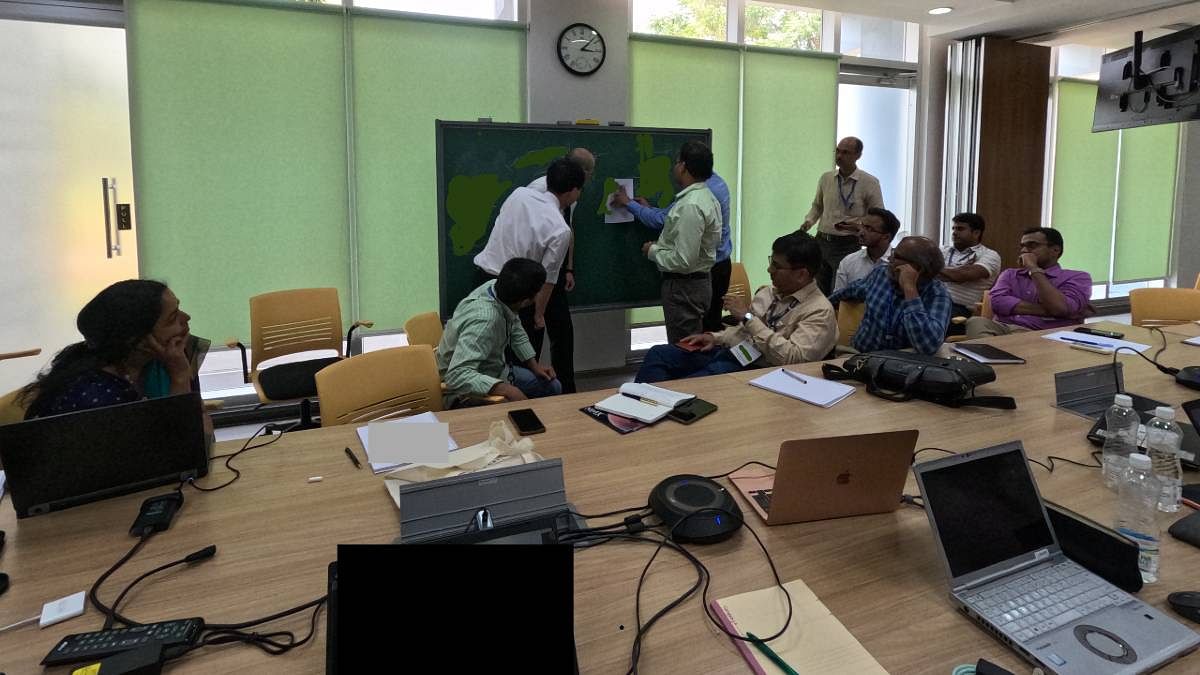New Delhi: The India-Japan partnership for their joint moon mission, Lunar Polar Exploration Mission (LUPEX), is likely to take flight in a few years, the Japan Aerospace Exploration Agency (JAXA) said in an exclusive interview with ThePrint.
The mission’s primary objective is to explore the lunar surface and search for subsurface water.
LUPEX marks JAXA’s first attempt to send a large rover to the moon. While the Japanese space agency is responsible for the lunar rover, the Indian Space Research Organisation (ISRO) is handling the lander that will carry the rover.
Currently, the lander for the mission is awaiting approval from India’s department of space.
The mission is now progressing at a satisfactory pace despite some initial hiccups due to the COVID-19 pandemic, said JAXA in an email response to ThePrint.
The mission will also carry observation instruments from US’ National Aeronautics and Space Administration (NASA) and the European Space Agency (ESA), further enhancing its scientific capabilities.
According to both agencies — ISRO and JAXA — LUPEX will not only confirm the presence of water but will also investigate its quantity, distribution on the lunar surface and below ground, and form, such as the level of mixing with dry regolith, the layer of loose unconsolidated rock and dust that sits atop a layer of bedrock.

Both India and Japan have made significant strides in lunar exploration in recent months.
In August last year, ISRO made history by becoming the first space agency to land its craft, Chandrayaan-3, near the lunar south pole. The achievement also marked India as the fourth country to land on the moon. Japan’s Smart Lander for Investigating Moon (SLIM) continued this trend, with Japan becoming the fifth country to land on the moon this January.
The SLIM mission aimed to demonstrate accurate lunar landing techniques embodied in a small explorer and to accelerate the study of the moon and other planets using the lighter exploration system.
Edited excerpts from the interview with JAXA:
What is the recent update on JAXA’s LUPEX mission?
Technical coordination is vigorously underway between ISRO and JAXA, and among multiple stakeholders in Japan.
In Japan, the rover has started to manufacture an engineering model (EM) to verify the design results, and the two instruments have started EM testing.
How is the partnership with ISRO shaping out?
There was a difficult period when technical coordination stalled due to the COVID-19 disaster. However, things have improved and we are now working together to identify technical issues and formulate solutions.
When is the mission expected to take flight?
As soon as the project on the ISRO’s lander is approved by the government of India, ISRO and JAXA plan to resume development schedule coordination with a view to launch in a few years.
What does the mission aim to achieve?
LUPEX, ISRO-JAXA collaborative mission, aims to acquire water resource data to reveal the potential use of lunar water as a resource.
JAXA has the other objective to demonstrate exploration technology for activities on the surface of a gravitational body.
ISRO is responsible for developing the lander, and JAXA is responsible for procuring the rover and launch vehicle.
The mission results will contribute to future lunar missions, such as the Japanese Pressurized Rover, In-Situ Resource Utilization (ISRU) pilot plants for hydrogen production and construction of a sustainable manned base, which consists of, for example, lunar propellant plants and habitation facilities.
What are the challenges that the mission could encounter?
The LUPEX rover has to overcome the following four technical challenges:
(1) Direct measurement of water ice to determine water content and molecular weight and species,
(2) High-precision vertical excavation of soil to obtain the vertical water distribution,
(3) Horizontal exploration of diverse environments to have high traversability and hill climbing ability to cope with the complex terrain of the lunar polar regions,
(4) Survivability, i.e., long-time observation in non-sunlit areas and night-time performance.
JAXA will verify our current rover design can overcome these technical challenges using the engineering model.
(Edited by Nida Fatima Siddiqui)
Also Read: Launch of NISAR, joint India-US Earth mapping mission, delayed. New date to be announced by April-end

